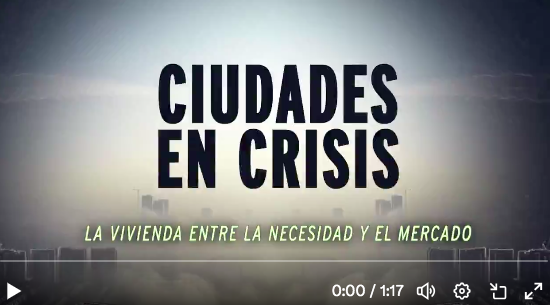Charting the Need for System Change amid Climate Change
Housing and Land Rights Violations in 2008–10
International Housing and Land Rights Day 2010
4 October 2010
This report of the Habitat International Coalition‘s Housing and Land Rights Network (HIC-HLRN) on housing and land rights violations departs from the past. Previous iterations of the annual HIC-HLRN report issued on World Habitat Day have focused on a single theme such as the current wave of persecution against rights defenders (20071), or housing-related mechanisms of discrimination (20092). This report presents more of an inventory of themes that arises from the patterns of recorded violations and focuses rather on their inter-relatedness, especially in the overarching context of climate change.
The usual annual HLRN report has demonstrated how using the contents of HLRN‘s Violation Database (www.hlrn.org and http://hlrn.org/english/welcome_violation.asp) could serve the user seeking to analyze violations recorded in the current and foregoing two years, while that time frame allows the patterns and contours of the violations to emerge. Over the same trajectory, this 2008–10 review delivers a message of multiplicity and indivisibility of certain factors that lead to violations, with examples provided below. This interconnectedness parallels the indivisibility of human rights themselves, of which housing and land rights—as always—remain our point of departure.
It is observed that violation patterns are often interconnected, combining the four common types of violation that the Violation Database (VDB) was designed to monitor and record: eviction, dispossession, destruction and privatization. Examples from the VDB, as well as from press monitoring reflected in HLRN News, show how these multiple aspects can obtain in a single instance, especially in cases where heavy equipment and disproportionate force are used in an eviction, wreaking destruction, as well as causing dispossession. When such a case arises from a privatization process or motive, the case hypothetically covers the gamut.
The content and context of violation cases vary. However, from the composite picture that emerges, trends also manifest from the many unfortunate practices, as well as omissions that lead to violations of people‘s housing and land rights. These cases of violation bear remarkable similarities across regions within the review period. From Australia, with its struggle against drought and home-destroying fires, to Zanzibar‘s challenge of land losses from shoreline erosion, the message is clear that the common and overshadowing context that affects housing and land rights this period is erratic weather as a probable function climate change. While classic human rights methodology is challenged to identify a single perpetrator among the causal factors, the victimization is nonetheless real. Throughout the review period, deliberate efforts continue to explore questions of liability for such losses in light of the states‘ treaty obligations to respect, protect and fulfill human rights. The VDB contains cases in which reliable arguments can identify such a link. However, where development policies or postdisaster practices and omissions cause or deepen the harm, for example, at least two trends occlude in one example of avoidable violation.
And thus, a comprehensive view of violations through a tour of the Violation Database in 2010 reveals the lessons reflected here, namely that multiple factors often lead to housing and land rights violations at the expense of human well-being and dignity, multiple violations in many cases combine forced eviction, dispossession, destruction and/or privatization-related violations, emerging trends are replicated across borders and regions, and the inter-relatedness of those trends underscore the fact that we are somehow in this picture all together. As trends appear increasingly interlaced, this realization is likewise reflected in the Habitat Day statement of the Habitat International Coalition. Such occasional statements such as expressions of social movement and civil society convergence are indicators of a practical and mutual realization that, indeed, popular forces, both rural and urban-based, share a common planet and purpose of pursuing alternatives to the violation of housing and land rights that affect so many human persons and their habitat.
To download the complete report, click here.


